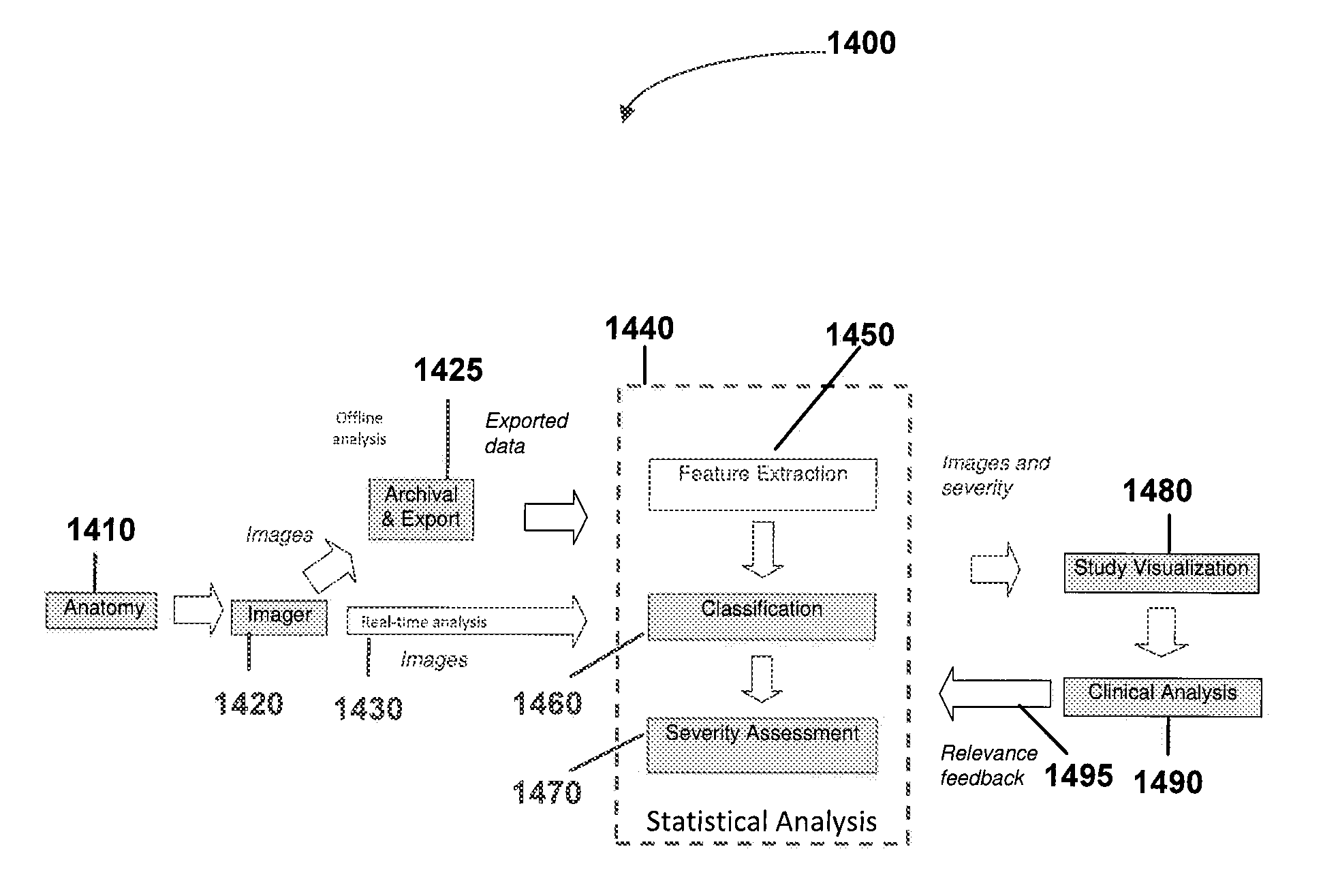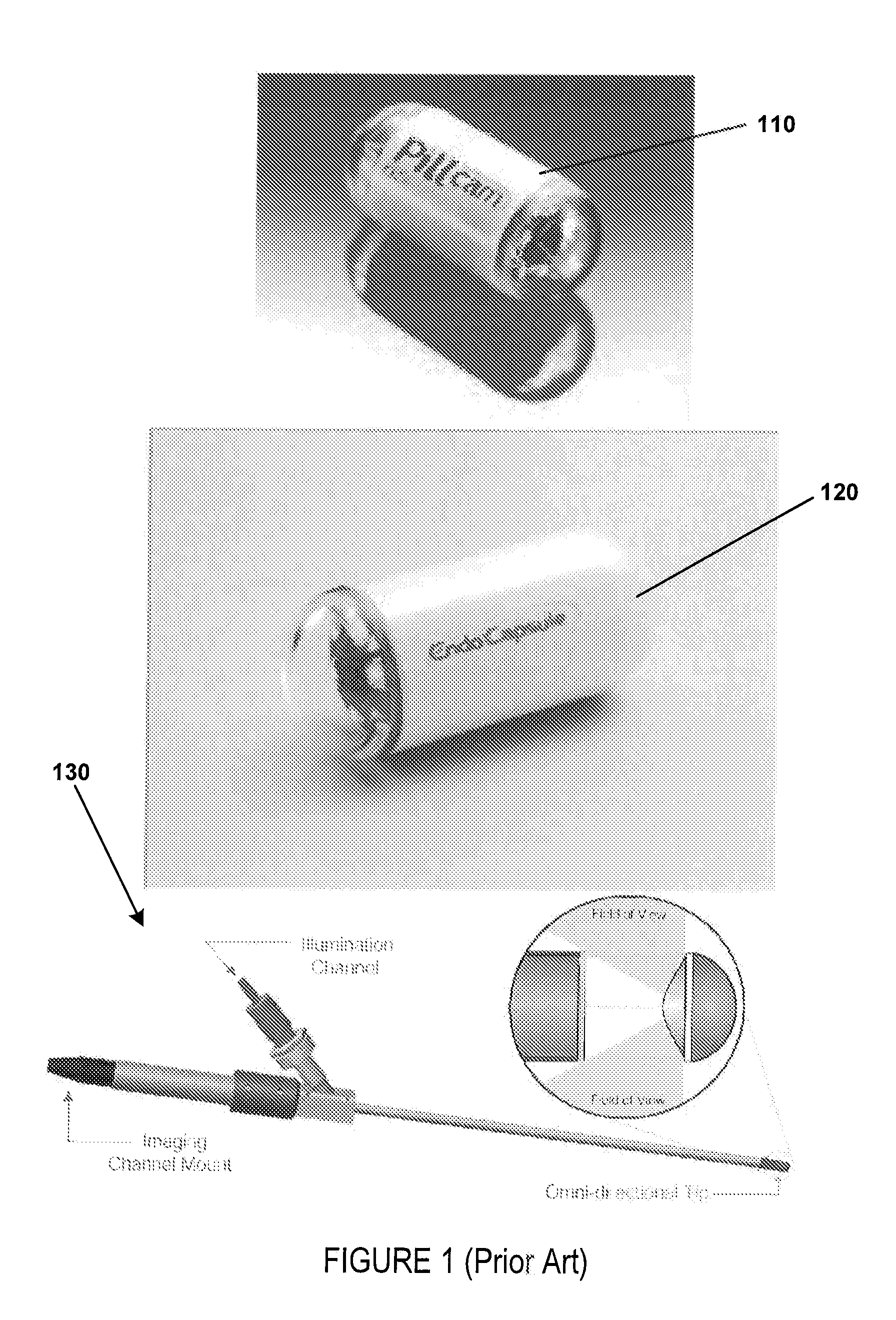System and method for automated disease assessment in capsule endoscopy
a capsule endoscopy and automated technology, applied in the field of systems and methods of processing images from the capsule endoscopy, can solve the problems of wasting time, limited clinical utility of the capsule endoscopy, and wasting time in the evaluation process
- Summary
- Abstract
- Description
- Claims
- Application Information
AI Technical Summary
Benefits of technology
Problems solved by technology
Method used
Image
Examples
examples
[0080]in one embodiment, support vector machines (SVM) may be used to classify CE images into lesion (L), normal tissue, and extraneous matter (food, bile, stool, air bubbles, etc). FIG. 4 depicts example normal tissue 410; air bubbles 420; floating matter, bile, food, and stool 430; abnormalities such as bleeding, polyps, non-Chrohn's lesions, darkening old blood 440; and rated lesions from severe, moderate, to mild 450. In addition to lesions other attributes of interest may include blood, bleeding, inflammation, mucosal inflammation, submucosal inflammation, discoloration, an erosion, an ulcer, stenosis, a stricture, a fistulae, a perforation, an erythema, edema, or a boundary organ
[0081]SVM has been used previously to segment the GI tract boundaries in CE images (M. Coimbra, P. Campos, J. P. Silva Cunha; “Topographic segmentation and transit time estimation for endoscopic capsule exams”, in Proc. IEEE ICASSP, 2006). SVM may use a kernel function to transform the input data into ...
embodiment
[0099]In one embodiment, lesions as well as data for other classes for interest may be selected and assigned a global ranking (e.g., for example, mild, moderate, or severe) based upon the size, and severity of lesion and any surrounding inflammation, for example. Lesions may be ranked into three categories: mild, moderate or severe disease. FIG. 5, 510 shows a typical Crohn's disease lesion with the lesion highlighted. As a lesion may appear in several images, data representing 50 seconds, for example, of recording time around the selected image frame may also be reviewed, annotated, and exported as part of a sequence. In addition, a number of extra image sequences not containing lesions may be exported as background data for training of statistical methods.
[0100]Global lesion ranking may be used to generate the required preference relationships. For example, over 188,000 pairwise relationships may be possible in a dataset of 600 lesion image frames that have been assigned a global ...
PUM
 Login to View More
Login to View More Abstract
Description
Claims
Application Information
 Login to View More
Login to View More - R&D
- Intellectual Property
- Life Sciences
- Materials
- Tech Scout
- Unparalleled Data Quality
- Higher Quality Content
- 60% Fewer Hallucinations
Browse by: Latest US Patents, China's latest patents, Technical Efficacy Thesaurus, Application Domain, Technology Topic, Popular Technical Reports.
© 2025 PatSnap. All rights reserved.Legal|Privacy policy|Modern Slavery Act Transparency Statement|Sitemap|About US| Contact US: help@patsnap.com



